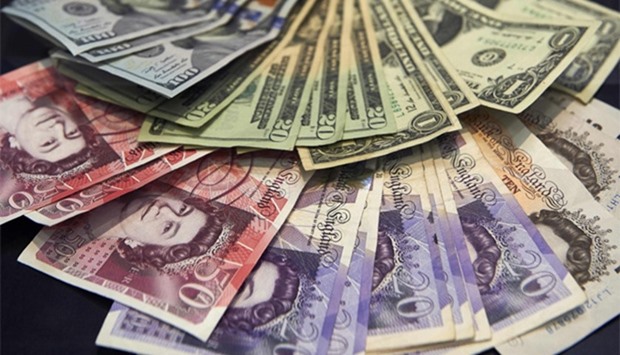* Euro plunges to 26-month low vs dollar
* Decline comes after Fed sounds less dovish than expected
* Sterling hits 30-month low vs dollar
The US dollar climbed on Thursday after the Federal Reserve cut rates a day earlier but cautioned it was not necessarily the start of a cycle of monetary loosening, sending the euro to a 26-month low and the British pound to a 30-month low.
In a widely expected move, the US central bank cut rates on Wednesday for the first time since the financial crisis, in response to the growing risk of higher import tariffs and a slowdown in the world's major economies. But it also signaled that the quarter point cut was a ‘mid-cycle policy adjustment.’
‘It's not the beginning of a long series of rate cuts,’ Fed Chairman Jerome Powell said after the Fed's decision, although he added, ‘I didn't say it's just one rate cut.’
The Fed's less-dovish-than-expected message triggered a rebound in the dollar, sending the index to a 26-month high of 98.93 on Thursday. It has since retraced some of those gains, but remains up 0.14% on the day.
The Fed's statement shifted analyst expectations for rate cuts this year.
‘We still expect a follow-up of (25 basis points) this year, but October now seems more likely than September, as the FOMC appears poised to wait for further evidence that downside risks are weighing on the economy and holding down inflation,’ wrote Morgan Stanley analysts.
The euro weakened to a 26-month low of $1.1025, and sterling touched a 30-month low of $1.2077. However, both the euro and the pound were gripped by their own issues.
‘You want to stay short euro and sell the rallies,’ said Stephen Gally, European head of forex strategy at BMO Capital Markets.
Data from the Commodity Futures Trading Commission shows that hedge funds have been doing just that. Short euro positions increased to $5.44 billion in the week to July 26.
Investors expect the European Central Bank to take a more aggressive stance on monetary policy easing than the Fed, which would dampen appetite for the common currency. Fears that Britain may exit the European Union on Oct. 31 without transitional trade agreements in place hurt sterling and the euro. The euro was last down 0.13% at $1.1059.
Britain's deputy finance minister, Rishi Sunak, said the UK wants a Brexit deal, but ‘we must have the firmness to leave (the EU) if necessary without a deal.’
Investors and analysts expect sterling to decline further as more headlines emphasize the growing probability Britain will quit the European Union without trade agreements.

